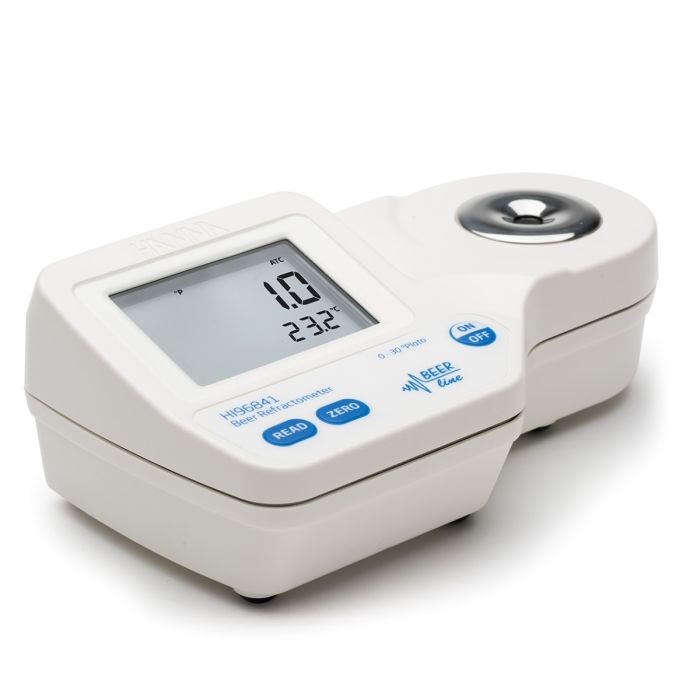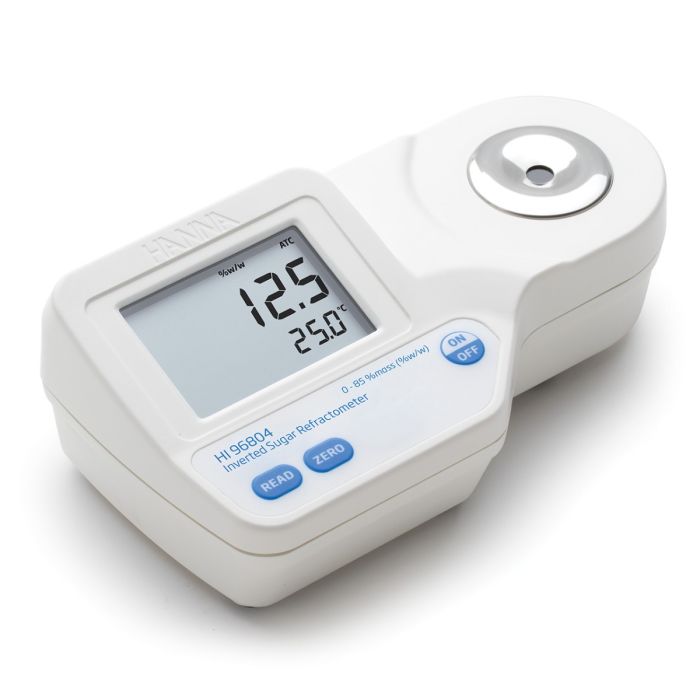Refractometers are available that convert the refractive index of the sample to sucrose concentration in units of percent by weight, % Brix (also referred to as °Brix).The conversion used is based on the ICUMSA Methods Book (International Commission for Uniform Methods of Sugar Analysis). Since the majority of sugar in grape juice is fructose and glucose and not sucrose, the reading is sometimes referred to as “Apparent Brix.”
Versions are also available for converting brix readings to the oBaumé, oOechsle and oKMW scales.
oBaumé scale is based on density and was originally designed to measure the mass of sodium chloride in water. oBaumé is used in winemaking to measure the sugar in must. The refractometer converts the % Brix reading to oBaumé based on the table found in the Official Methods of Analysis of AOAC International, 18th Edition. One oBaumé is approximately equal to 1.8 % Brix, and 1°Baumé is roughly equivalent to 1% alcohol when the wine is fully fermented.
oOechsle (°Oe) is mainly used in the German, Swiss and Luxenbourgish winemaking industry to measure the sugar content of must. The °Oe scale is based on specific gravity at 20oC (S.G.(20/20)) and is the first 3 digits following the decimal point. One oOe is roughly equal to 0.2 % Brix.
oOe = [(S.G.(20/20)) – 1] x 1000
oKlosterneuburger Mostwaage (oKMW) is used in Austria to measure the sugar content of must. oKMW is related to oOe by the following equation:
oOe = oKMW x [(0.022 x oKMW) + 4.54]1 oKMW is roughly equivalent to 1% Brix or 5 oOe.°KMW is also known as oBabo.
Refractometers are available that allow the winemaker to estimate the potential alcohol that will be produced from the fermentation of sugars. “Potential” or “probable” alcohol is an estimation of the alcohol content (% vol/vol). This conversion depends on many factors, such as the type of grapes, the grape maturity, the growing region and yeast fermentation efficiency and temperature.
The refractometer allows the user to tailor the instrument to their specific needs based on their experience, since no fixed conversion factor is universally applicable. The first conversion is based on the % Brix value and an adjustable conversion factor between 0.50 and 0.70 (0.55 is a common value).
Potential alcohol (% v/v) = (0.50 to 0.70) x % Brix
One drawback of the above equation is that it does not take into account the non-fermentable sugars and extract. A second equation was also added that takes these factors into account and can give a more accurate estimate of the potential alcohol content in the finished wine. This conversion is named “C1” on the meter, and uses the following equation:
Potential Alcohol (%V/V) = 0.059 x [(2.66 x oOe) – 30] (C1)
The refractometers potential alcohol curve is based on the tables found in the European Economic Community Commission Regulation No 2676/90 of September 17, 1990, Determining Community Methods for the Analysis of Wine and International Organization of Vine and Wine (OIV). The potential alcohol curve is based on the following equation:
Potential alcohol (%v/v) = g/L of Sugar / 16.83




















